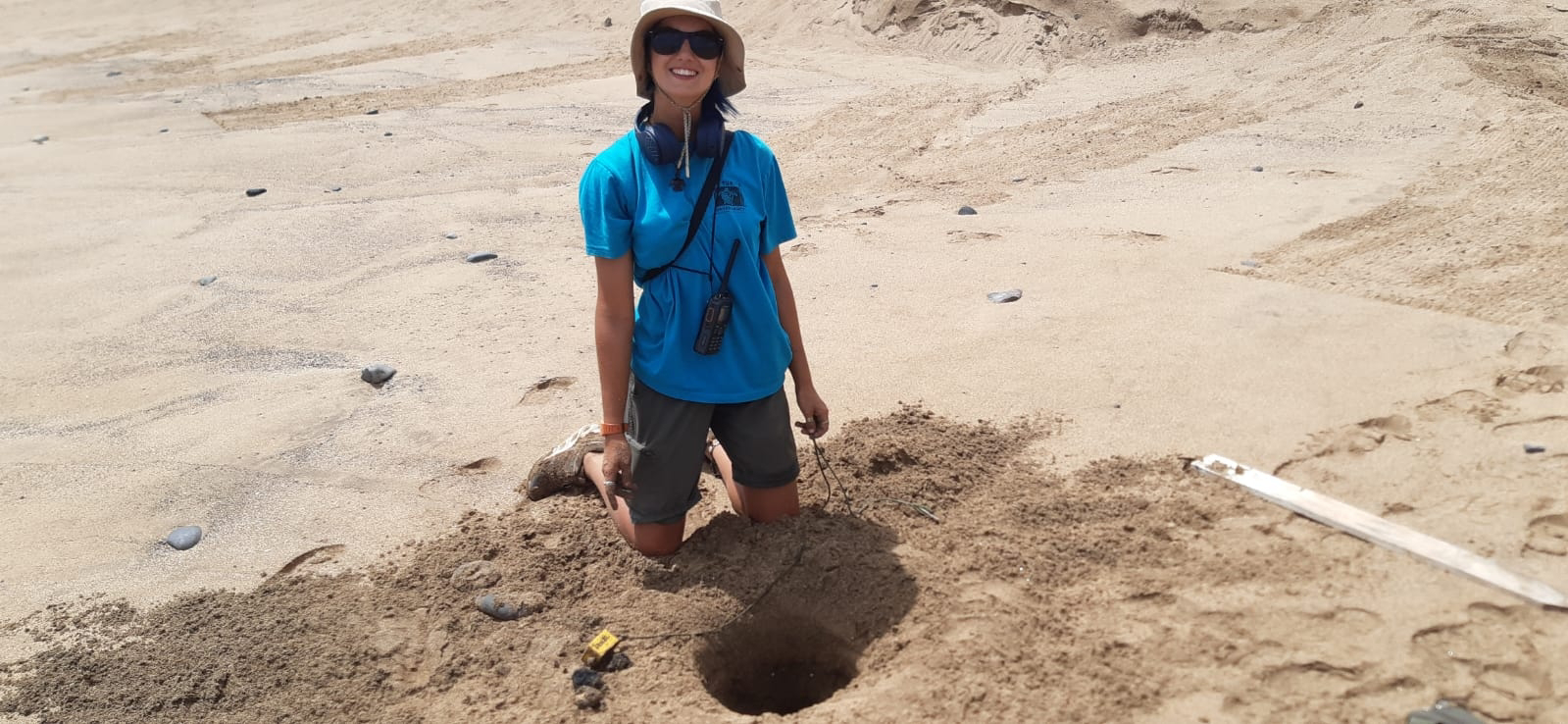Excavations On Ascension
By excavating a nest, we can investigate the success of the nest by determining how many of the eggs hatched. We can investigate the emergence success of the nest by determining how many of the hatchlings made it out of the nest. We also retrieve the temperature recorders we placed in the nests on the night they were laid to calculate/predict sex ratios and hatching dates by temperature changes.
Stages of excavation:
1. Shelve the dry sand away from the surface of the nest to find the wetter sand.
2. Dig straight down to the egg chamber (if cord to logger is found follow this, sand will feel softer when chamber is reached).
3. Once eggs are found, we measure TEC (Top of Egg Chamber).
4. We then remove the contents of the egg chamber carefully and the eggs are sorted into piles, hatched eggs are counted into piles of five (to help with counting totals) and unhatched eggs are placed in one pile all together. Only eggshells that are more than 50% of an egg are counted, anything smaller is placed in a pile of fragments.
5. When the temperature logger is found the depth and time is also recorded.
6. Once all the eggs have been removed and the bottom of the chamber (sand begins to feel harder and texture changes) is reached we record BEC (Bottom of Egg Chamber).
7. We then count how many hatched eggs (>50% of an egg shell) there are.
8. Then we open any unhatched eggs to investigate why they might have failed and record this in a data sheet, this then gives us a total unhatched egg number and is added to the hatched egg total to give the full clutch size. Any other notes are then also added to the data sheet.
9. Any live hatchlings or dead hatchlings found in the process of excavating the egg chamber are also recorded.
Temperature dependent sex determination (TSD) means that sea turtles have the genetic information to be a girl or boy. The factor that decides whether the genes to be a girl or the genes to be a boy get switched on is the temperature the developing embryos experience. In sea turtles, the sensitive period for when this determination happens is the middle third of incubation.
For sea turtles, there is a pivotal temperature that if the temperature during the sensitive period is on average greater than then the hatchlings will become female and if its lower on average then they will become male. For our green turtles on Ascension that temperature is 28.8°C.
The temperature recorders produce a graph that shows us the temperature within the nest every hour over the entire incubation.
We can use the temperature graph to determine the hatch date for the nest by looking for the point at which the maximum temperature begins to fall as this is when the turtles have hatched and exit the nest.












Comments